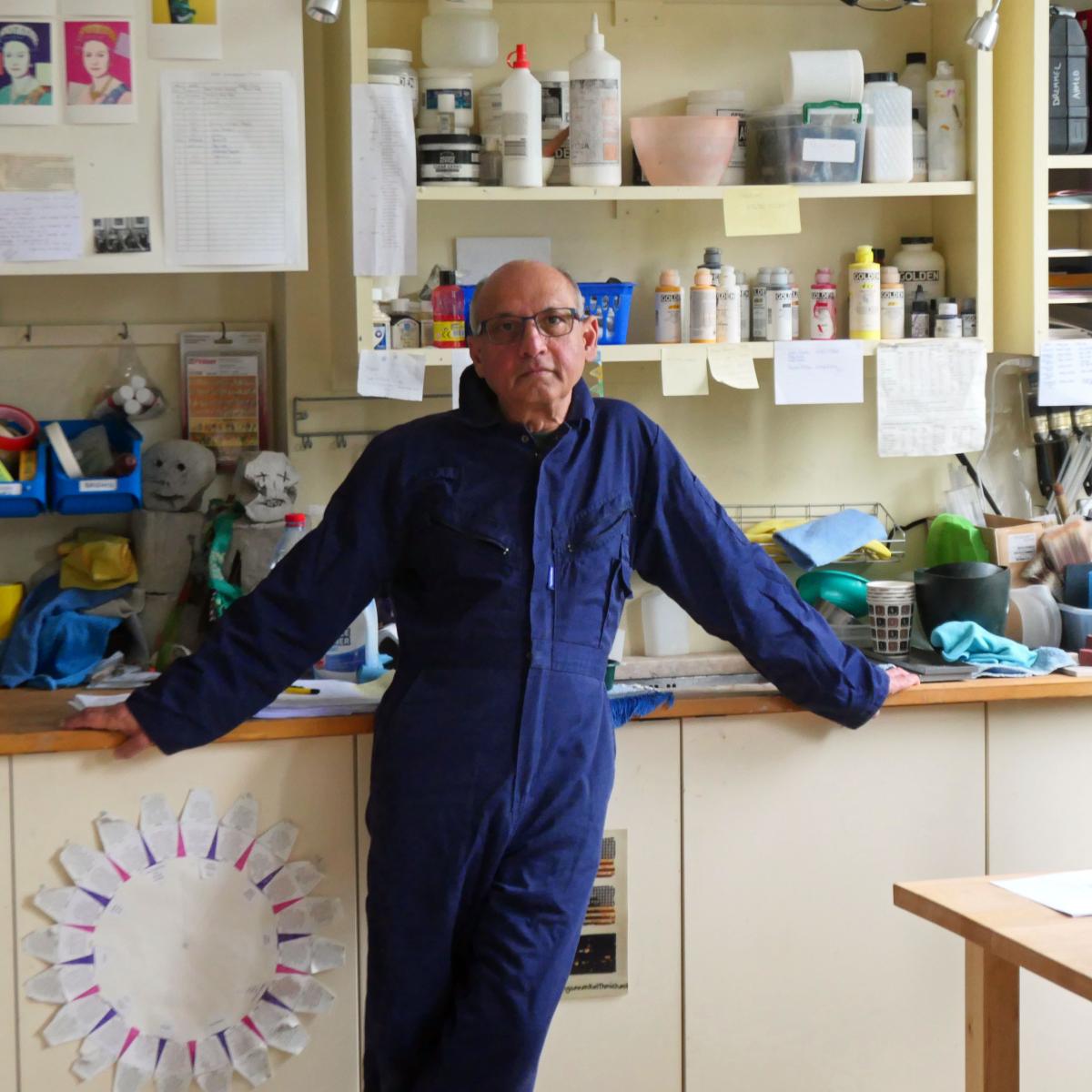
What have you been doing today?
Finishing off my application for “Sculpture in the City” where I am submitting two different large scale outdoor installations that I created during the two Covid lockdowns. Hardest thing has been to choose the right images to go with the application. Once completed and sent off my treat will be to meet a friend at the Whitechapel Gallery this afternoon to see Theaster Gate’s “A Clay Sermon”, which I am looking forward to very much. Since the lockdowns I have been determined to see at least 2-3 shows a week- taking advantage of the fact that I live in possibly the greatest city in the world for visual arts and culture.
Is that a typical day for you?
I don’t think there is typical day. My activities are determined by the life cycle of the projects I am working on- sometimes its heavy on research/reading, other times on experimentation/making; if I am organising shows it might be writing proposals, admin, publicity and social media. Scheduling “interruptions” to these activities by going and seeing other people’s art is something I aim to get better at.
When did you start working with culture, health and wellbeing, and how?
For a number of years my practice has been concerned with the role of art and artistic resistance in creating the conditions for small scale, progressive and collaborative human relationships. I set up Space36 in 2016 in my home as an experiment in opening up a private domestic space to artists and visitors for thinking and art making in a collaborative and convivial setting to see what sort of art and what sort of conversations emerge. The limited opportunities that the Covid lockdowns presented for sociability forced me to think about how I could use art that could be visually striking, monumental and accessible from the street. It also made me rethink the value of uncomplicated, purely sensory and situational work that didn’t try too hard to mean something other than what it was.
What was the last project you came across that inspired you?
I was stunned when I saw Heather Philipson’s work at the Turbine Hall. The fluency with which she intertwines different media (installation, sculpture, video, projection), the monumentality of the conception, the immersive use of colour and sound, the delight in the use of materials made a big impression on me. I have been playing around with moving images and projection in my studio over the past year and seeing her work has made me rethink what is possible.
Biography
I am of Indian heritage and after working in the voluntary and public sector as project and change manager for nearly three decades I decided to fully immerse myself in my art practice. After a number of years of research based studio practice (sculpture & installation) I became increasing committed to socially engaged art. I founded the Degrees of Freedom artist group in 2013 where I work collaborately with artists inside and outside the group to investigate, make conscious and challenge the rules governing public, private and hybrid spaces (www.degreesof-freedom.com). Inspired by Nato Thompson’s book “Seeing Power” I set up Space36 in 2016 as an occasional experimental collaborative art venue. Space36 is set up in the belief that the spaces in which art is created, shown and discussed set the conditions for the sort of art that is to be practiced. Currently my time is split between my studio practice, and instigating and organising projects for Degrees of Freedom and Space36.
